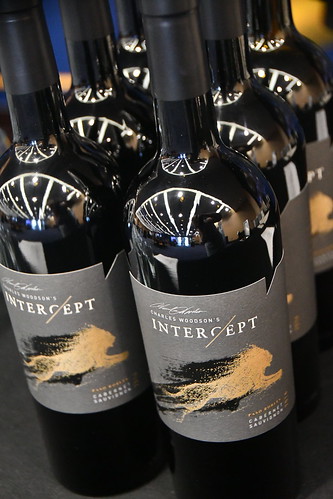

Once opened and re-corked, a bottle stored in a cool, dark environment (like your fridge) will stay fresh and nicely drinkable for a day or two. The proper temperature to aim for is 55° F to 60° F for lighter-bodied reds and 60° F to 65° F for fuller-bodied wines.


After all, room temperature in January is likely to be quite different than in August, even considering the possible effect of central heating and air conditioning systems.
#Charles woodson intercept wine how to
How to Serve Red WineĪ common piece of advice is to serve red wine at “room temperature,” but this suggestion is imprecise. Blending can take place before or after fermentation, with the latter, more popular option giving more control to the winemaker over the final qualities of the wine. Sometimes small amounts of a particular variety are added to boost color or aromatics. For example, a red wine blend variety that creates a fruity and full-bodied wine would do well combined with one that is naturally high in acidity and tannins. Blending can be utilized to enhance balance or create complexity, lending different layers of flavors and aromas. In many European regions, strict laws are in place determining the set of varieties that may be used, but in the New World, experimentation is permitted and encouraged resulting in a wide variety of red wine styles. With hundreds of red grape varieties to choose from, winemakers have the freedom to create a virtually endless assortment of blended red wines. There is a fairly uniform tendency here towards wines that are unapologetically bold and opulently fruit-driven, albeit with a surprising amount of acidity thanks to the region’s chilly nighttime temperatures. Other popular varieties include Merlot, Petite Sirah, Petit Verdot, Syrah, Grenache and Rhône blends, both red and white. This is mostly red wine country, with Cabernet Sauvignon and Zinfandel standing out as the star performers. The San Miguel, (Paso Robles) Estrella, (Paso Robles) Geneso, (Paso Robles) Highlands, El Pomar and Creston Districts, along with San Juan Creek, are the hotter, more western appellations of the greater Paso Robles AVA. These all experience more ocean fog, wind and precipitation compared to the rest of the Paso sub-appellations. Just east over the Santa Lucia Mountains from the chilly Pacific Ocean, lie the coolest in the region: Adelaida, Templeton Gap and (Paso Robles) Willow Creek Districts, as well as York Mountain AVA and Santa Margarita Ranch. But with eleven smaller sub-AVAs, there is actually quite a bit of diversity to be found in this inland portion of California’s Central Coast. Paso Robles has made a name for itself as a source of supple, powerful, fruit-driven Central Coast wines.


 0 kommentar(er)
0 kommentar(er)
